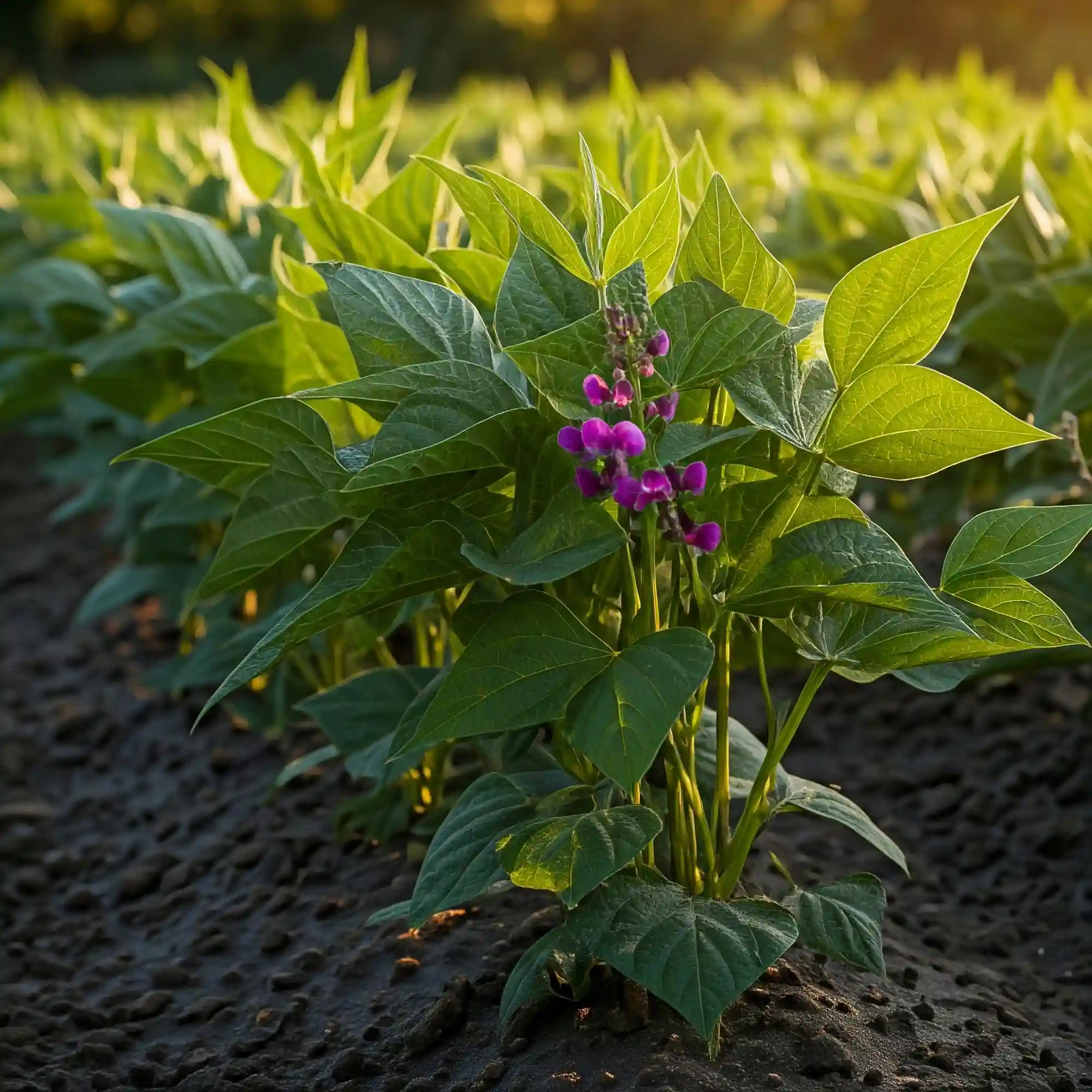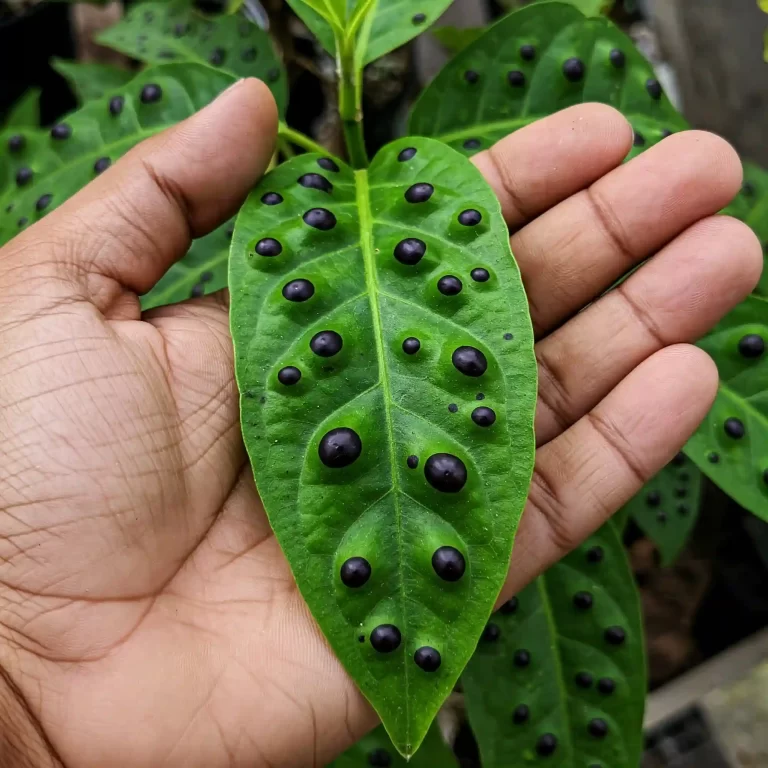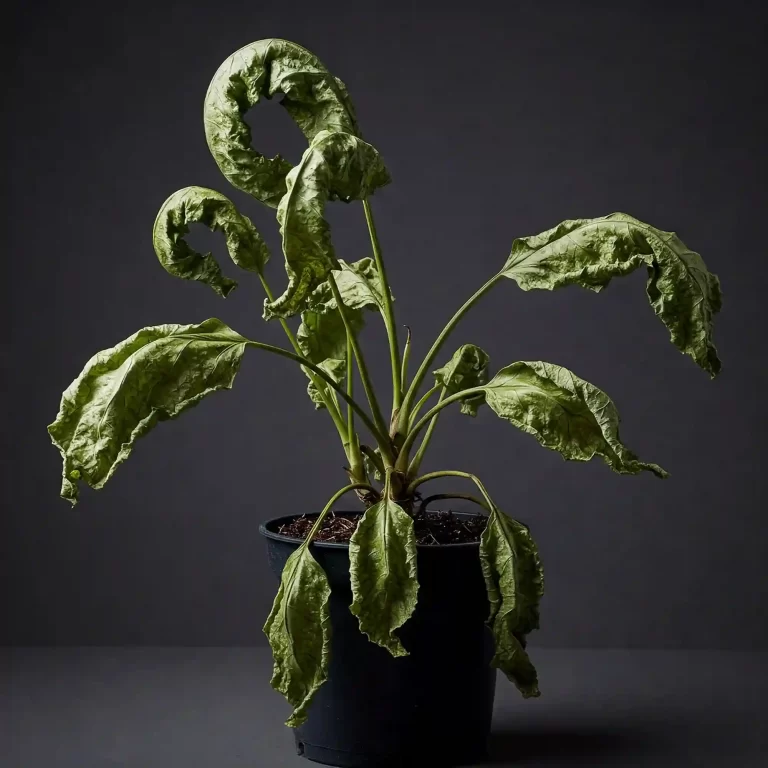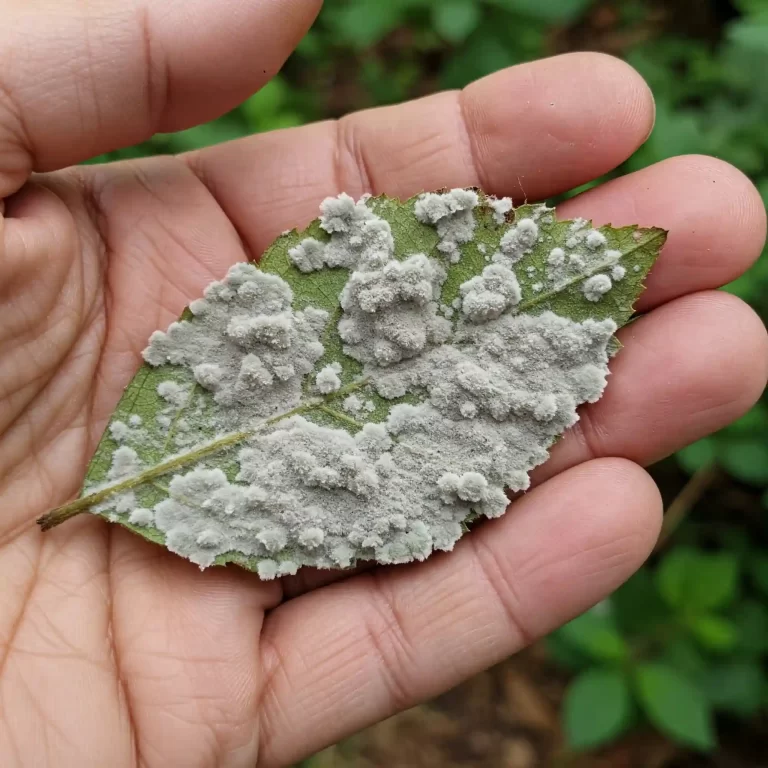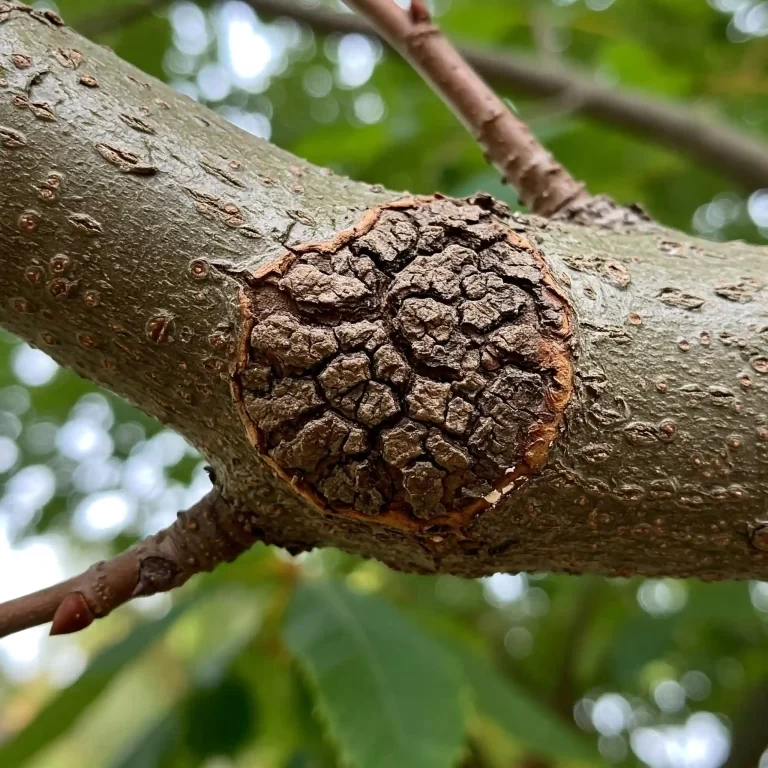Have you ever walked through your bean patch, anticipating a bountiful harvest, only to find your plants looking sickly, their leaves mottled and pods discolored? It’s a disheartening sight, especially after all the hard work you’ve put in. This is a problem every gardener dreads. The frustration of seeing your carefully nurtured plants succumb to disease can be overwhelming, impacting not just your harvest but also your sense of accomplishment. I know this feeling well, having faced similar challenges in my own garden. But there’s good news: understanding and managing Bean Pod Mottle Virus (BPMV) is entirely possible. In this guide, I’ll equip you with the knowledge and strategies you need to protect your beans and ensure a healthy, productive garden.
Bean Pod Mottle Virus: Your Complete Guide to Protecting Your Beans
As a gardener, I understand the joy of nurturing plants from seed to harvest. But sometimes, despite our best efforts, diseases can strike. One such culprit that often targets bean crops is the Bean Pod Mottle Virus (BPMV). This guide is designed to be your comprehensive resource for understanding, preventing, and managing this common bean ailment. I want to share my knowledge and experience to help you protect your precious bean plants.
What is Bean Pod Mottle Virus (BPMV)?
Bean Pod Mottle Virus (BPMV) is a plant virus that primarily infects common beans (Phaseolus vulgaris) and soybeans. It belongs to the Comovirus genus, a group of viruses known to affect legumes. The virus is characterized by distinct mottling patterns on the leaves and sometimes on the pods of infected plants. As a gardener, I’ve observed that the severity of these symptoms can vary depending on the bean variety, environmental conditions, and the specific strain of the virus.
From my experience, understanding the basics of BPMV is the first step in effectively managing it. The virus itself is a small particle containing RNA (ribonucleic acid), which is its genetic material. This RNA allows the virus to replicate within the plant cells, disrupting their normal functions and causing the characteristic symptoms. The virus relies on vectors, primarily the bean leaf beetle, to move between plants.
Here’s a breakdown of the key characteristics of BPMV:
- Classification: Comovirus genus
- Genetic Material: RNA
- Host Plants: Primarily common bean (Phaseolus vulgaris) and soybean
- Primary Vector: Bean leaf beetle (Cerotoma trifurcata)
- Characteristic Symptom: Mottling of leaves and pods
It’s important to remember that BPMV doesn’t directly kill the plant in most cases. However, it significantly reduces yield and affects the quality of the beans. This is why prevention and management are so crucial.
Understanding the Virus’s Impact on Plant Health
BPMV disrupts the plant’s normal physiological processes. The virus interferes with chlorophyll production, which is essential for photosynthesis—the process by which plants convert sunlight into energy. This disruption leads to the characteristic mottling or mosaic patterns you see on infected leaves. The light and dark green patches represent areas where chlorophyll production is either reduced or unaffected.
Furthermore, the virus can also affect the development of bean pods. Infected pods may be smaller, discolored, or exhibit mottling similar to the leaves. In severe cases, the virus can even affect seed development, leading to smaller or discolored seeds, which can further impact future crops if saved for planting.
I’ve found that the impact of BPMV can be exacerbated by other stress factors, such as drought, nutrient deficiencies, or other diseases. A healthy, vigorous plant is generally more resilient to viral infections. This highlights the importance of providing your bean plants with optimal growing conditions.
Key Facts about BPMV
- BPMV is widespread in bean-growing regions across North and South America.
- The severity of BPMV infection can vary depending on the bean variety.
- Bean leaf beetles are the primary vector for BPMV transmission.
- There is no cure for BPMV once a plant is infected; therefore, prevention is key.
- Integrated pest management (IPM) strategies are the most effective way to manage BPMV.
Identifying Bean Pod Mottle Virus: Spotting the Signs
Recognizing BPMV early is crucial for implementing effective management strategies. As a gardener, I’ve learned that vigilance is key. Regularly inspecting your bean plants for telltale signs can make a significant difference. Here’s what to look for:
- Leaf Symptoms: The most distinctive symptom of BPMV is the mottling or mosaic pattern on the leaves. This pattern consists of irregular patches of light and dark green, creating a mottled appearance. In some cases, the leaves may also exhibit chlorosis, a yellowing of the leaf tissue. I’ve noticed that the severity of mottling can vary; sometimes it’s subtle, while other times it’s quite pronounced. You might also observe leaf distortion, where the leaves appear crinkled or puckered.
- Pod Symptoms: If the infection is severe, the bean pods themselves can also show symptoms. Look for discoloration and mottling on the pod surface. The pods may also be smaller than usual or exhibit deformities. I’ve seen instances where the pods are twisted or have a bumpy texture due to the virus.
- Plant Growth: BPMV can affect the overall growth of the plant. Infected plants may be stunted, meaning they don’t reach their full potential size. This can lead to reduced yield, as the plants produce fewer pods and smaller beans.
- Seed Symptoms: In some cases, the virus can infect the developing seeds. This can result in seed mottling or discoloration. While this symptom may not be immediately apparent, it’s important to be aware of it, especially if you save seeds for planting in subsequent seasons.
Distinguishing BPMV from Other Bean Diseases
It’s important to differentiate BPMV from other common bean diseases that can cause similar symptoms. One such disease is the Bean Common Mosaic Virus (BCMV). While both viruses can cause mottling, there are some key differences:
- BCMV often causes more severe leaf distortion and can lead to plant death in susceptible varieties.
- BPMV is primarily transmitted by bean leaf beetles, while BCMV is mainly spread through infected seeds and aphids.
Another disease to be aware of is the Bean Golden Mosaic Virus (BGMV), which is more prevalent in tropical and subtropical regions. BGMV causes a more pronounced yellow mosaic pattern on the leaves compared to BPMV.
By carefully observing the specific symptoms and considering the potential vectors involved, you can accurately identify BPMV and implement the appropriate management strategies. I’ve created a table summarizing the key differences between these common bean diseases.
Comparison of Common Bean Diseases
| Feature | BPMV | BCMV | BGMV |
| Primary Symptom | Mottling on leaves and pods | Severe leaf distortion, mottling | Pronounced yellow mosaic on leaves |
| Transmission | Bean leaf beetles | Infected seeds, aphids | Whiteflies |
| Severity | Yield reduction, quality impact | Plant death in susceptible varieties | Significant yield loss |
| Geographic Location | Widespread in bean-growing regions | Worldwide | Tropical and subtropical regions |
How Does Bean Pod Mottle Virus Spread? Understanding Transmission
Understanding how BPMV spreads is essential for implementing effective prevention and control measures. From my experience, I’ve learned that the virus relies on specific vectors and environmental factors to move between plants. Here’s a breakdown of the transmission process:
- Bean Leaf Beetles: The primary vector for BPMV transmission is the bean leaf beetle (Cerotoma trifurcata). These beetles are small, about ¼ inch long, and can vary in color from yellow-green to reddish-brown, often with black spots. Both the adult beetles and their larvae can feed on bean plants, but it’s the adults that are responsible for transmitting the virus.
- Feeding Habits: Adult bean leaf beetles acquire the virus by feeding on infected plants. When an infected beetle feeds on a healthy plant, it can transmit the virus through its saliva. The virus then enters the plant cells and begins to replicate, leading to infection.
- Alternative Hosts: BPMV can also infect other leguminous plants, including soybeans, clover, and alfalfa. These plants can serve as alternative hosts, allowing the virus to persist in the environment even when bean crops are not present. This is why weed control is an important aspect of BPMV management.
- Seed Transmission: Although less common, BPMV can also be transmitted through infected seeds. If seeds from infected plants are saved and planted, the resulting seedlings may also be infected. This is why it’s important to use certified disease-free seeds.
- Mechanical Transmission: In some cases, BPMV can be transmitted mechanically through contaminated tools or by handling infected plants and then touching healthy ones. This is why it’s important to sanitize tools and wash your hands after working with plants that may be infected.
Factors Affecting BPMV Transmission
Several factors can influence the spread and severity of BPMV:
- Beetle Population: The size of the bean leaf beetle population plays a significant role in BPMV transmission. Larger beetle populations can lead to more widespread virus transmission.
- Environmental Conditions: Warm temperatures and high humidity favor beetle activity and virus transmission.
- Plant Density: Closely spaced plants can facilitate the spread of the virus, as beetles can easily move between plants.
- Weed Presence: The presence of weeds, especially leguminous weeds, can provide alternative hosts for the virus and increase the risk of infection.
Understanding the Virus’s Journey
To better understand how BPMV spreads, let’s trace the virus’s journey:
- Infected Plant: The virus resides within the cells of an infected bean plant.
- Beetle Acquisition: A bean leaf beetle feeds on the infected plant, acquiring the virus particles.
- Transmission to Healthy Plant: The infected beetle moves to a healthy plant and feeds, transmitting the virus through its saliva.
- Infection and Replication: The virus enters the healthy plant’s cells and begins to replicate, causing symptoms to develop.
- Spread to Other Plants: Infected plants serve as a source of the virus for other beetles, continuing the cycle of transmission.
By understanding the transmission dynamics of BPMV, you can take proactive steps to disrupt the virus’s life cycle and protect your bean crops. I’ll discuss specific prevention and control strategies in the next section.
Protecting Your Beans: Prevention, Control, and Management of BPMV
As a gardener, I firmly believe that prevention is always the best medicine, especially when it comes to plant diseases like BPMV. While there’s no cure once a plant is infected, there are several effective strategies you can implement to minimize the risk of infection and manage BPMV in your bean patch. Here are some key approaches I’ve found successful:
- Resistant Varieties: One of the most effective ways to prevent BPMV is to plant bean varieties that are resistant or tolerant to the virus. Many seed companies offer varieties specifically bred for disease resistance. When selecting seeds, look for labels indicating resistance to BPMV or other common bean diseases.
- Insecticide Application: Since bean leaf beetles are the primary vector for BPMV, controlling their populations can significantly reduce virus transmission. Insecticides can be used to manage beetle populations, but it’s important to use them responsibly and target applications to minimize harm to beneficial insects. Always follow the instructions on the product label and consider using organic options when possible.
- Cultural Practices: Several cultural practices can help prevent and manage BPMV:
- Crop Rotation: Rotating bean crops with non-host plants can disrupt the virus’s life cycle and reduce the risk of infection. Avoid planting beans in the same area year after year.
- Weed Control: Managing weeds, especially leguminous weeds, is crucial, as they can serve as alternative hosts for the virus. Regularly remove weeds from your garden to eliminate potential virus reservoirs.
- Sanitation: Remove and destroy any infected plant debris to prevent the virus from spreading to healthy plants. This includes removing infected leaves, pods, and entire plants if necessary.
- Proper Spacing: Ensure adequate spacing between plants to improve air circulation and reduce humidity, which can favor beetle activity and virus transmission.
- Integrated Pest Management (IPM): IPM is a comprehensive approach to pest and disease management that combines various strategies to minimize risks to human health and the environment. IPM strategies for BPMV include:
- Monitoring: Regularly scout your bean plants for signs of BPMV and bean leaf beetles.
- Cultural Practices: Implement the cultural practices mentioned above, such as crop rotation, weed control, and sanitation.
- Biological Control: Encourage natural enemies of bean leaf beetles, such as parasitic wasps and predatory insects.
- Chemical Control: Use insecticides judiciously and only when necessary, targeting applications to minimize harm to beneficial insects.
Additional Tips for BPMV Management
- Use Certified Disease-Free Seeds: When purchasing seeds, choose certified disease-free seeds to reduce the risk of introducing BPMV into your garden.
- Early Planting: Planting beans early in the season can sometimes help them avoid peak beetle populations and reduce the risk of infection.
- Row Covers: Using row covers can help protect young bean plants from bean leaf beetles and reduce virus transmission.
- Regular Monitoring: Regularly inspect your bean plants for signs of BPMV and bean leaf beetles. Early detection is crucial for implementing effective management strategies.
By implementing these prevention, control, and management strategies, you can significantly reduce the impact of BPMV on your bean crops and ensure a healthy and productive harvest.
The Impact of Bean Pod Mottle Virus: Understanding the Consequences
As a gardener, I know that the ultimate goal is a bountiful harvest. Unfortunately, diseases like BPMV can significantly impact your yield and the overall quality of your beans. It’s important to understand the potential consequences of BPMV infection to appreciate the importance of prevention and management strategies. Here’s a closer look at the impact of BPMV:
- Yield Loss: BPMV can cause significant yield losses in bean crops. The severity of the loss can vary depending on several factors, including the bean variety, the severity of the infection, and environmental conditions. In severe cases, BPMV can reduce yields by up to 50% or more. This can be a significant economic loss for commercial bean growers and a disappointing outcome for home gardeners.
- Bean Quality: In addition to reducing yield, BPMV can also affect the quality of the beans. Infected pods may be smaller, discolored, or exhibit mottling similar to the leaves. This can make the beans less marketable for commercial growers and less appealing for home consumption. In some cases, the virus can also affect seed development, leading to smaller or discolored seeds.
- Economic Impact: The economic impact of BPMV can be substantial, particularly for commercial bean growers. Reduced yields and lower bean quality can lead to significant financial losses. In regions where bean production is a major industry, BPMV outbreaks can have a significant impact on the local economy.
Factors Influencing the Severity of Impact
Several factors can influence the severity of BPMV’s impact on bean crops:
- Bean Variety: Some bean varieties are more susceptible to BPMV than others. Planting resistant varieties can significantly reduce the impact of the virus.
- Time of Infection: Plants infected early in the growing season tend to experience more severe yield losses than those infected later in the season.
- Environmental Conditions: Environmental conditions, such as temperature and humidity, can influence the severity of BPMV infection. Warm temperatures and high humidity favor beetle activity and virus transmission.
- Beetle Population: The size of the bean leaf beetle population plays a significant role in BPMV transmission and the severity of the impact. Larger beetle populations can lead to more widespread virus transmission and greater yield losses.
Long-Term Effects of BPMV
While BPMV doesn’t typically kill bean plants, the infection can have long-term effects. Infected plants may be weakened and more susceptible to other diseases and pests. This can further reduce yield and impact the overall health of the plant. Additionally, if infected seeds are saved and planted, the resulting plants may also be infected, perpetuating the cycle of infection.
Understanding the potential consequences of BPMV infection can help you make informed decisions about managing this disease in your bean patch. By implementing the prevention and control strategies I discussed earlier, you can minimize the impact of BPMV and ensure a healthy and productive bean harvest.
Frequently Asked Questions (FAQs) About Bean Pod Mottle Virus
As I’ve shared my knowledge about BPMV, I’ve often encountered recurring questions from fellow gardeners. I believe addressing these frequently asked questions will further enhance your understanding and equip you with practical knowledge to tackle BPMV effectively.
- How to Identify Bean Pod Mottle Virus Symptoms on Leaves?
The most distinctive symptom is the irregular mosaic pattern of light and dark green patches on the leaves. This mottling can vary in intensity. In some cases, you might also observe yellowing (chlorosis) or distortion of the leaves. - How Do Bean Leaf Beetles Transmit Bean Pod Mottle Virus?
Bean leaf beetles are the primary carriers (vectors) of BPMV. They acquire the virus by feeding on infected plants. When these infected beetles feed on healthy plants, they transmit the virus through their saliva, initiating a new infection. - Are There Effective Organic Control Methods for Bean Pod Mottle Virus in Beans?
While there’s no direct organic cure for BPMV, you can manage its spread through organic practices. These include controlling bean leaf beetle populations using organic insecticides like neem oil, promoting beneficial insects that prey on beetles, and practicing crop rotation and weed control to eliminate alternative hosts. - What Are the Long-Term Effects of Bean Pod Mottle Virus on Bean Plants?
BPMV typically doesn’t kill bean plants directly. However, it can significantly reduce yield and bean quality. Infected plants may also be more susceptible to other diseases and pests. If infected seeds are saved and planted, they can perpetuate the virus in subsequent crops. - How Can I Distinguish Bean Pod Mottle Virus from Other Bean Leaf Diseases?
Distinguishing BPMV from other diseases requires careful observation. While mottling is a common symptom, other diseases may present different characteristics. For instance, Bean Common Mosaic Virus (BCMV) often causes more severe leaf distortion and can lead to plant death in susceptible varieties. Consulting resources like university extension websites or plant diagnostic labs can aid in accurate identification.
I hope these FAQs have addressed your most pressing concerns about BPMV. Remember, a proactive approach encompassing prevention and integrated management strategies is key to safeguarding your bean patch.
Conclusion: Cultivating Healthy Beans and a Thriving Garden
As we conclude this comprehensive guide on Bean Pod Mottle Virus, I want to leave you with a sense of confidence and empowerment. I firmly believe that with the right knowledge and proactive strategies, you can successfully protect your bean crops and enjoy a bountiful harvest.
Throughout this guide, we’ve covered the essential aspects of BPMV, from understanding its nature and identifying its symptoms to implementing effective prevention and management techniques. We’ve explored the virus’s transmission dynamics, the role of bean leaf beetles, and the potential impact on yield and bean quality.
Remember, the key to managing BPMV lies in a proactive approach. By implementing the following strategies, you can significantly reduce the risk of infection and minimize the impact on your bean patch:
- Plant resistant varieties: Choose bean varieties that exhibit resistance or tolerance to BPMV.
- Control bean leaf beetle populations: Employ responsible insecticide application or organic control methods to manage beetle numbers.
- Practice cultural controls: Implement crop rotation, weed control, sanitation, and proper plant spacing.
- Utilize integrated pest management (IPM) strategies: Combine various approaches to minimize risks to human health and the environment.
I encourage you to adopt these practices and remain vigilant in monitoring your bean plants. Early detection and prompt action can make a significant difference in managing BPMV and ensuring a healthy and productive garden.
As a fellow gardener, I understand the challenges and rewards of nurturing plants. I hope this guide has provided you with valuable insights and practical knowledge to protect your bean crops from BPMV. With careful observation, proactive management, and a bit of patience, you can cultivate healthy beans and enjoy the fruits of your labor.
